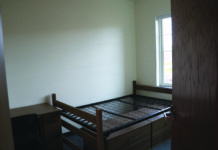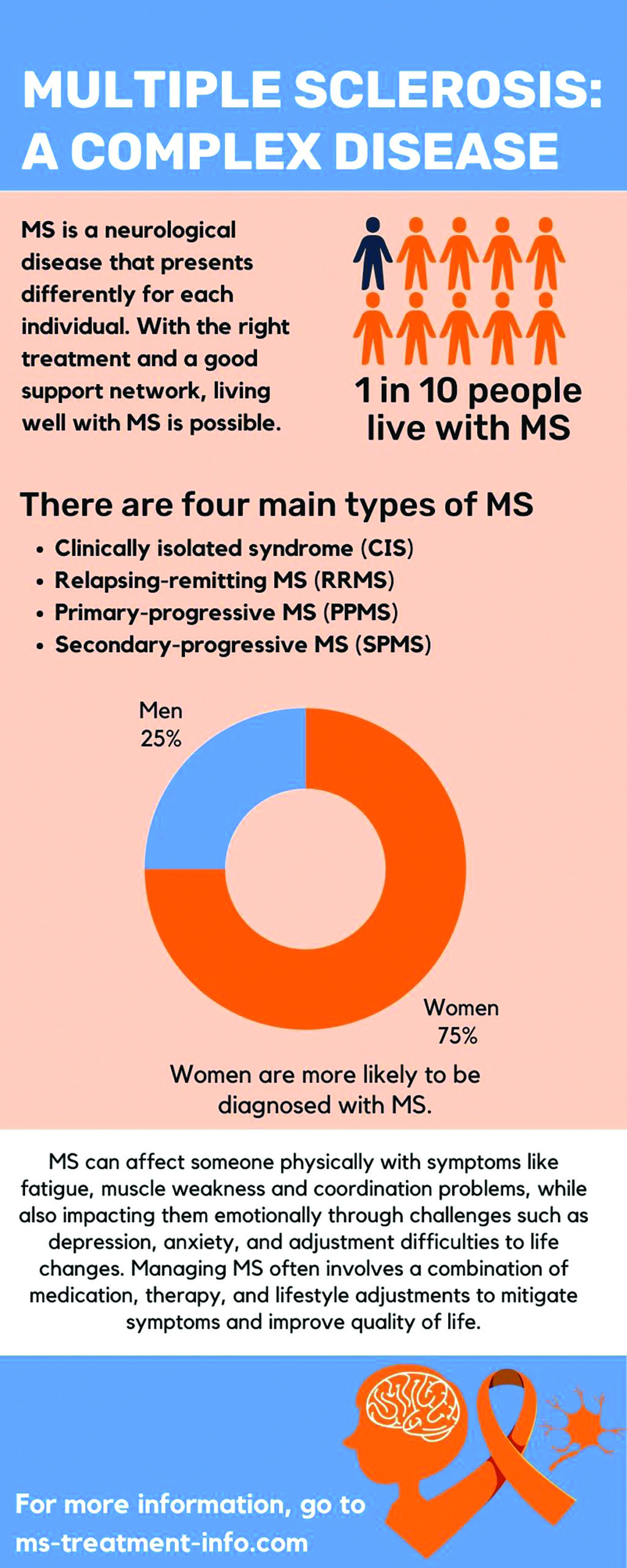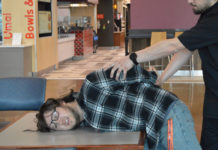Colorado Mesa University’s Associated Student Government (ASG), along with the rest of the campus, has reached the first quarter mark for the academic year. Students have recently completed their midterm evaluations and it seems the student governing body is due for an assessment as well. I speak on this from a place as a former correspondent of ASG during its darker times, an editor who looks at the work ASG is currently doing and as a friend of many of its executives. I do not write this to demean, put down or stifle. I write this because I believe the work ASG can do this year has the capacity to improve the experience of all students across this campus, myself included.
So, after eight weeks, eight meetings and 39 academic days ASG has passed 10 bills. The vast majority of these are budgetary requests passed to their body from the Fee Allocation Committee (FAC), a body which screens the bills requested from students, student organizations and clubs. While this seems to be their main priority, ASG heralds their status as “the voice of Colorado Mesa University students,” who “strives to better the university for all.” As of yet, it seems CMU has seen little of the latter.
That is not to say there has not been incredible leaps and bounds coming out of the organization. ASG President Ben Linzey and other executives have provided consistent press conferences, organized tailgates for the football games, new standards for transparency on campus and a more professional atmosphere during the meetings. Linzey has overall been a very active and available force on campus, present at most athletic events, FAC meetings and CMU’s Snapchat account (even if they do spell his name wrong from time to time).
I find, then, it does not seem to be a lack of leadership, or innovation, coming out of ASG. Instead, the student legislative body, the Senate, has not lived up to the expectations of their office. These issues are not unique to the 2017-2018 student government; in fact, they are doing far better than in previous years. No major scandals, flubs or impeachments have come out of ASG. Due to these improvements, it seems we are looking at an ASG with an immense potential, and they are not currently reaching it.
Let’s begin with ASG’s transparency. Linzey has already taken steps to improve such with his executive order. Now, there is an expectation that executive members will have town halls, meetings will be recorded and press conferences will be bi-weekly.
These are improvements, but these seem to be established expectations of a democratic government and its representatives. And these improvements do not scratch the surface of what else should be expected.
Let’s get into them.
First off, if a student constituent was hoping to contact their relevant senator, they will have to email ASG Vice President Gabby Gile in order to receive this information, per their website’s instructions.
It seems nonsensical to have this information blockade.
Why can’t a student find out who their representative is with an easy google search?
Colorado State University’s student government has all of their information readily available on their website. On CMU’s ASG website, the only information to find is the existence of the student government, when elections are held, Linzey and Gile’s information, and where and when meetings are held.
Students cannot find out how their fees are being spent, who is spending them, and how much has been spent.This is an incredible oversight and leaves The Criterion as the only consistent source of information about ASG actions.
Students should be able to access the bills that are going to be seen before a meeting after they have been passed and the minutes recorded during the meeting all online in a timely manner.
It should be noted that ASG does post a video of their meeting on Facebook the day after it occurs. But there are two major issues inherent within this system.
One, this is one video from one corner frame with a microphone attached to the top. It is difficult to hear what is being said, who is saying it and why they are relevant to this conversation.
Two, this video is available only on Facebook. The average student is not going to know what the Facebook profile’s name is. It could be “CMU student government,” “Colorado Mesa University Associated Student Government” or “Colorado Mesa University ASG.” They picked the name “CMU ASG,” which is easy and concise, but students are unlikely to know their school has a student government, let alone what their acronym is.

This leads me to my second consideration: social media. It stands hand in hand with ASG’s transparency, and it finds itself lacking as well. To begin with the aforementioned Facebook page, since the beginning of this school year ASG has posted 13 times. Five of which are the recorded meetings, four are shared posts: one of which is ASG politely sharing a post of The Criterion, one is a reminder for students to attend their meeting, one is a picture of new senators and one is sharing their tailgate event.
The page is about as barebones as their website, with a profile picture that has not changed in five years, a cover photo that was changed only a week ago to a campaign photo for Linzey and Gile, and a description that only reads “An organization of the Students for the Students.”
The other social media available for ASG is their Instagram account, which they seem to use better, but also carries complications. First of all, when searching for “CMU ASG” on Instagram you will find three different accounts. The first is “cmu_asg2014,” obviously a now-abandoned three-year-old account. The second is “cmu_asg” with zero posts, 52 followers and following 93. The final and likely present account is “asg_cmu.” However, it seems to be the original Linzey/Gile campaign account with a slight rebranding. It is even still called “Linzey Gile” on their profile page.
To me, this raises questions of ethicality. One, it seems to be an unintentional dividing of the electorate. Those who voted for Carly Hanley and Libby Bierbaum last year have no opportunity to come together for ASG as a whole, as ASG’s social media presence seems to be relying on the campaign from May. And two, ASG’s social media seems to be making a statement that Linzey and Gile are the only people in the student government, which I am certain is neither of their intentions.
A more present social media can give the student body the knowledge that their representatives are active in progress as well. Tailgates and events are fine, but ASG is the governing body for the students, not the Programming Activities Council. It is on them to better the campus through legislation, and their social media accounts should highlight it. The problem, it seems, is there is little legislation to highlight.
This, I believe, is ASG’s greatest weakness at this first quarter mark, but it has been present since I have covered the student government over a year ago. Senators just do not seem to go above and beyond, and those that do are far and few between. Senate leaders consistently have to remind their senators to attend office hours like a professor reminding students to attend class. This year, as a “thank you” gesture, the Senate leader gave out cupcakes to senators who attended just half of their required office hours, like a teacher rewarding students much younger than the senators’ actual age.
Senators cannot miss more than five meetings, excused and unexcused, according to ASG’s bylaws. However, it seems the student government has been playing a little fast and loose with this rule. A former senator was able to pile on four unexcused and two excused absences before she resigned, another had four excused before he resigned and another had two unexcused before they also resigned.
This is college and I am no stranger to missing a class or meeting, but a higher expectation is affixed to that seal in Linzey’s office.
Absences and resignations are only symptoms of the continued productivity issue in the ASG Senate. Little legislation or public change has come out of their nine meetings. It is fantastic that ASG has committees to focus their work towards, but this has been an established expectation of ASG and a legislative branch of any government.
The problem as well is the fact that they have just recently got around to assigning their committee membership after seven meetings, and they are still not completely filled. This is another requirement outlined in the ASG bylaws, membership of just one committee, and it’s incredible it took so long to get to that point.
One committee, transportation, is one of the few that could see real, visible change on the CMU campus. And as of last week, it had no members. The committee would work to add more bike racks, bike lanes and attempt to better transportation opportunities for students. I requested more bike racks on campus during a public input session early in the semester, and it has been a month since then and no progress has been made. In a recent meeting, Linzey had to argue for the importance of this committee, citing the dangerous 12th Street crosswalks.

I will note that the diversity committee seems to be making a noticeable amount of progress, meeting regularly with many members and hoping to collaborate with the university’s faculty senate. It seems to come from a fire ignited following the Trump administration’s decision regarding the end of their support of DACA.
When news of that broke originally, ASG’s Senate unanimously passed a resolution in support of Dreamers. Senators spoke with passion about the possible opportunities and work that could be done for students who may feel unsafe on the CMU campus. Eighteen ASG representatives wanted to be members of a relevant committee. It marked a moment that real work could come out of the governing body.
At that same meeting, the 32 member body of ASG was then encouraged to attend a DACA demonstration out on the plaza in a few days, and of them, only six attended. It was disappointing, and The Criterion voiced such disappointment in our editorial.
Following this, Linzey wrote a private email to senators in which he called The Criterion’s editorial a “perpetuation of seeking rain on a sunny day” and expected we would lose readership due to it. Thankfully, in his conclusion, he did say this was an issued challenge to be accepted, but it was lost in a Trumpian dispute to the words The Criterion wrote. The goal of this email seemed to be to reassure the senators of their merit, instead of a public response to an editorial Linzey disagreed with.
Six out of 32 is disappointing, and it should have been addressed as such.
The only non-budgetary bills that have graced an ASG meeting is that of the executives’ own work, nothing of the efforts of the Senate. These senators are volunteers, without a paycheck, so it may not be surprising they may phone it in. I expect and hope for more out of my student government, so I hope to be proven wrong and see more effort than the current bare-minimum list. Being an ASG senator can mean more than a “resume builder.”
With this in mind, at the first quarter mark, I believe CMU’s student government has earned a grade of C-. This can be attributed to the lack of real progress to be seen, an over-worked president who provides practically all of the action for ASG and a web and social media presence that leaves a lot to be desired. I hope that when I return at the end of this semester to reevaluate ASG’s progress in the next quarter I find an ASG that has made CMU a better place for all students, a feat of which I know they are capable.






